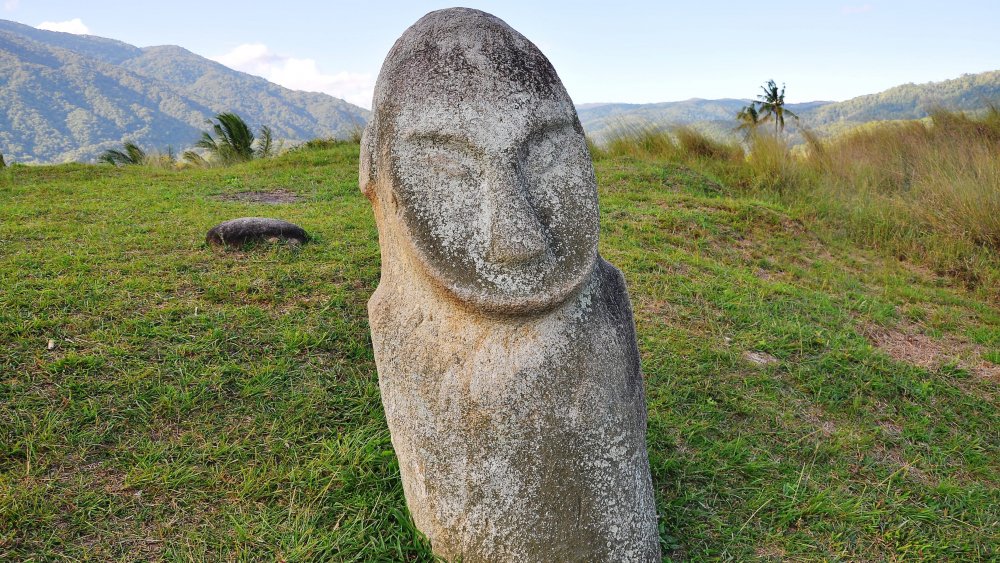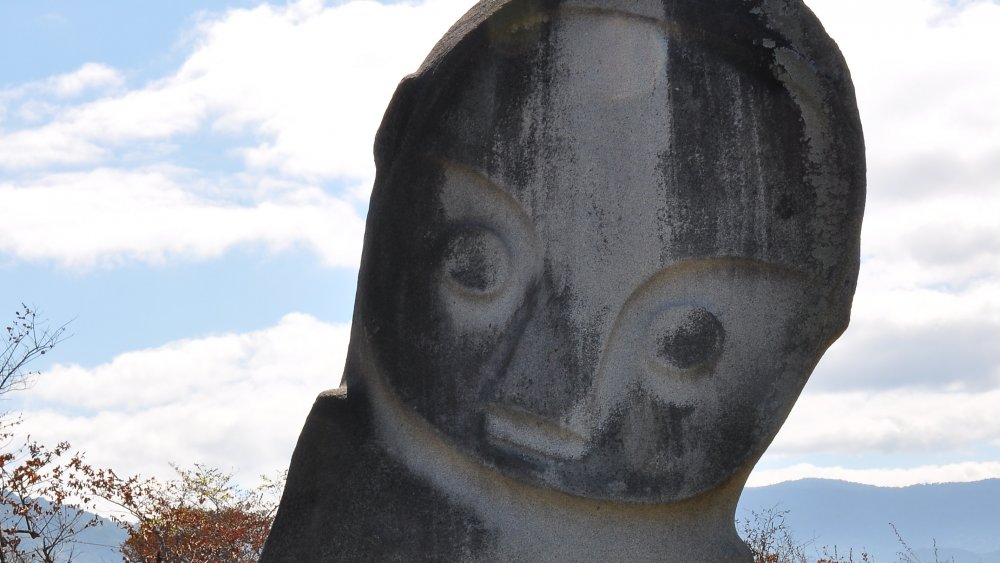The Details About Indonesia's Mysterious Stone Statues
The world is full of historical artifacts we still can't explain; the stone statues of Bada Valley, Indonesia are particularly interesting. According to Ancient Origins, there are several hundred of these megaliths in Lore Lindu National Park in the District of Poso of Central Sulawesi, with 30 of them "depict[ing] human/human-like forms." Per SulawesiExperience, they date back to about the 14th Century, but very little else is known about them and "the skill and genius of a civilization that we know absolutely nothing about." Even the type of stone from which the statues are carved isn't found anywhere in the area, which means they had to be hauled in from elsewhere. According to inhabitants of the Bada Valley, the statues have just "always been there." Origin stories include ancestral worship, human sacrifice, protection from evil spirits, and criminals who were turned to stone. Some people believe that they statues can disappear or move on their own.
Europeans first learned about the megaliths in 1908. Indahnesia notes that a missionary, Dr. Albert C. Kruyt, reported "that sacrifices for a wealthy harvest were brought to one of the statues; when there was too little rain, sacrifices of pinang nuts were brought to the statue that is known as Tarai Roi." The culture that had created the megaliths no longer existed by 1908, but it's estimated that the statues are the remains of a tradition that spread throughout Indonesia. Many parts of the country boast varieties of similar large stone objects.
Extraordinarily large heads with straight bodies and no legs
Sulawesi Experience reports on specific megaliths found throughout the valley, including Palindo, or The Entertainer, which "is perhaps a representation of Sepe's first mythological inhabitant, Tosaloge" and traditionally received offerings when inhabitants embarked on new projects, such as starting a garden. There's also Maturu, or "sleeping," and Oba, which has features similar to a monkey. Ancient Origins notes that the figures "are often depicted with extraordinarily large heads with straight bodies and no legs" as well as round eyes, a single line representing eyebrows, cheeks, and chin, and, in some cases, "large genitalia carved onto them. ..."
Separately from the megaliths, Bada Valley is also known for "kalambas," which Ancient Origins defines as "circular tanks carved out of individual blocks of stone," some with a single hole in the center, others separated into two bowls. Local lore states that kalambas were used as bathtubs for nobility, but the fact that many of them have large lids nearby suggests that they were used as coffins or water cisterns. Like the statues, no one knows for sure who made them or their use.
No one had formally documented the megaliths until scientists from The Nature Conservancy arrived in 2001 to "help Indonesian park officials find and protect the carvings as well as the forest around them," according to National Geographic. This project reported finding over 400 carvings in Lore Lindu National Park, ranging in height from a few inches to 15 feet.

